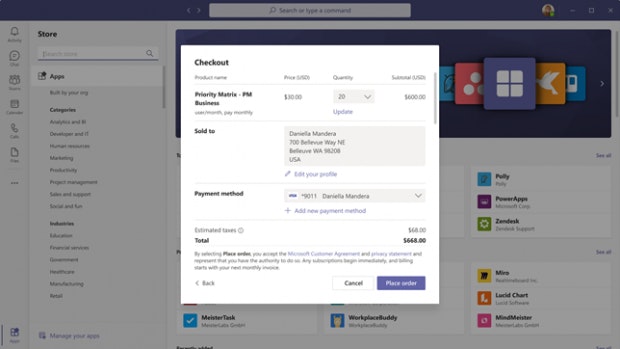Microsoft 365 becomes completely modular, teams become a platform
This year’s Build, Microsoft’s developer conference, is all about collaboration in a hybrid work environment. This requires turning away from thinking in apps. Everything should go everywhere in the future.
At this year’s Build, which will be held online from May 25th to 27th, Microsoft is turning its previous development approach on its head. If the provider had previously focused on function-related apps to support personal productivity, in the future it should no longer be important which app you use, but which specific task you currently have to do. Microsoft calls this new generation of software collaborative apps.
Teams becomes a platform. (Image: Microsoft)
Contents
Monothematic apps are at the end
In this new, collaboration-related perspective, you no longer start Word or Excel or whatever app. Rather, you use a word processing module to write a text, a spreadsheet module to do a calculation, or a calendar module to coordinate appointments. The principle should be clear.
The central software that should allow this multifunctionality is called Microsoft Teams. The manufacturer is now drilling into the former Slack competitor to a platform on which function modules run. These can be small app-like function bundles, but also bots, message or meeting extensions or webhooks and other connectors.
Teams becomes a platform for everyday work – regardless of the task to be performed
After the introduction of the Redmond-based company, it will soon no longer be necessary to use anything other than teams at all. Microsoft fully releases the interfaces to teams. In this way, all developers can package their functionalities in modules that can then be run in teams.

Teams store: Function modules can be purchased here. (Screenshot: Microsoft)
Microsoft has set up the Teams Store for distribution, which can also be accessed directly from the Teams admin center. In this way, team admins can put together the respective module packages that are needed for their daily work for their user groups. If the demand increases, new modules are simply bought or subscribed to and installed.
To help developers create these modules, Microsoft publishes the “App Studio” and the “Teams Toolkit” that already has is available for download and integrates with Visual Studio or VS Code. The Teams JavaScript Client SDK is available for web applications.

Teams toolkit for VS Code. (Screenshot: Microsoft)
Solutions such as Microsoft’s virtual company building Viva also benefit from the basic modularity of the new approach. Viva was designed as a platform from the start and now has the option of being equipped with dashboards, newsfeeds or other employee-oriented content via web parts. The integration of Microsoft Graph data is now also possible.


